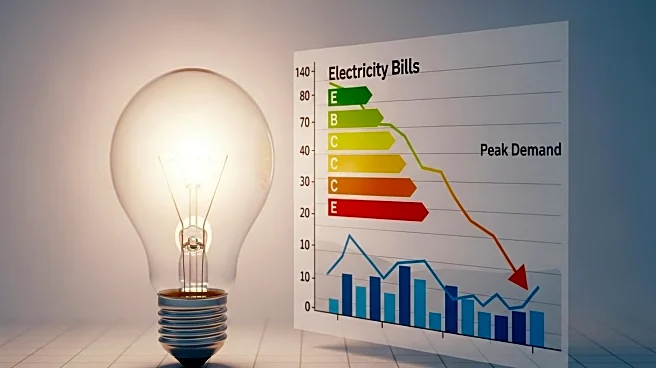What's Happening?
The Acadia Center has released a report detailing the significant impact of energy efficiency efforts in six New England states and New York. These initiatives are reportedly saving customers billions on utility bills and reducing peak demand on the region's electric grid. The report comes amid federal cuts to energy efficiency investments and rising electricity demand, underscoring the importance of such measures. The analysis focuses on investment levels and projected benefits from efficiency programs in Connecticut, Maine, Massachusetts, New Hampshire, New York, Rhode Island, and Vermont. It highlights that these states are set to invest nearly $10 billion in efficiency programs, with New England alone expected to generate $19.3 billion in lifetime benefits. The report also calls for improved efficiency data reporting to unlock further savings.
Why It's Important?
The findings of the Acadia Center report are crucial as they highlight the role of energy efficiency in reducing costs and emissions. With rising energy prices, consumer affordability is a major concern, and efficiency programs offer a low-cost resource to mitigate these costs. However, these programs face potential budget cuts, which could undermine their effectiveness. For instance, Massachusetts is projected to lose $1.49 billion in lifetime benefits due to recent budget cuts. The report suggests that standardized metrics for program evaluation and reporting could enhance the impact of these initiatives, allowing states to learn from each other and improve program design.
What's Next?
The report recommends that New England states and New York collaborate to standardize metrics for program measurement and reporting. This alignment could enhance the power and impact of energy efficiency programs across the region. By adopting universal reporting methodologies, states could better understand the value of these programs and unlock new opportunities for improvement. The report emphasizes the need for continued investment in energy efficiency to maintain its role as a cost-effective resource in the energy system.












